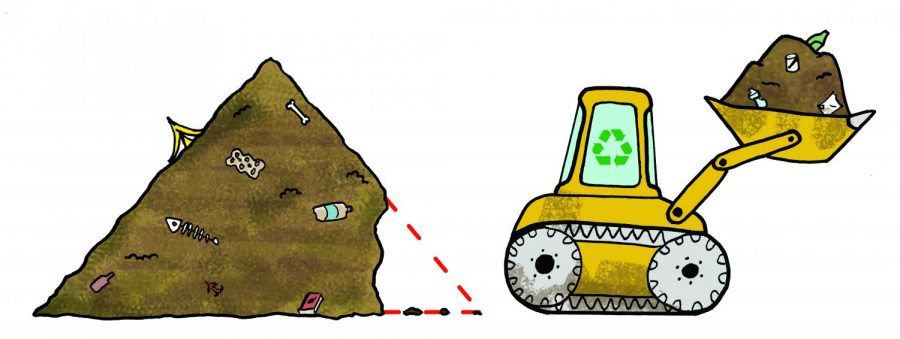Chicagoans’ recycling is ‘garbage’
Percentage of recyclable waste kept out of landfills.
November 14, 2016
Chicago residents need to do a better job keeping recyclables out of the trash because only 13 percent of the trash produced every year does not end up in landfills, according to Department of Streets and Sanitation Commissioner Charles Williams in an Oct. 28 DNAinfo report.
Mayor Rahm Emanuel made a deal in 2011 to let private garbage companies take over half of Chicago’s curbside recycling businesses. Now, aldermen across the city are suggesting the city’s contract with the two firms be reviewed and renegotiated when it expires.
The city’s recycling system works as a single stream program, which means all recyclable materials are collected and transported together, according to the City of Chicago website. Recyclables are picked up and transported in designated trucks to avoid contamination with regular garbage.
Chris Sauve, deputy commissioner of the DSS, said there have been problems with contamination and Chicago residents not correctly using the recycling containers they have been issued.
DSS is working closely with other city workers and organizations to educate citizens on the benefits of recycling, Sauve said.
“We saw a lot of uptake in the contamination,” he said. “The amount of material that we are recovering as recyclables is lower than what we want it to be, but we take it more as a challenge than a problem,” he said.
Chicago introduced the Blue Cart Recycling program in 2007 to make recycling easier throughout the city, according to the city’s website. The program provides biweekly recycling services to single family homes and multi-unit buildings with four or fewer units. The Blue Cart Recycling program is very efficient for collecting material from residents, and it makes it easy for people in Chicago to participate in an active recycling system,
Sauve said.
“The single-stream type collection program really is an easy-use system for the residents,” he said.
DSS is asking that Chicago residents pay more attention to what they are putting in the blue bins and to make sure they’re only putting recyclable items into the bins, according to city officials.
“It’s important that consumers are educated, so they’re source-separating the materials correctly, and there’s no cross contamination, so items can actually be recycled,” explained Melville Nickerson, executive director of the Illinois Recycling Association.
Mark Potosnak, an associate professor of Environmental Science and Studies at DePaul University, said glass, paper and plastic all go together in one recycling stream.
“This really simplifies the logistics of getting recycling out of the city into some other place to get it sorted,” Potosnak said. “The downside is you have these big recycling sorting facilities that try to pick out everything that’s valuable.”
Alex Mendez, assistant business manager at the Resource Center, said recyclables like plastic, cardboard and paper are being recycled into the same recycling bins, when they should recycle separately.
“There’s certainly a lot of things that we are doing and a lot of ways we are trying to engage people [to recycle],” Sauve said.








